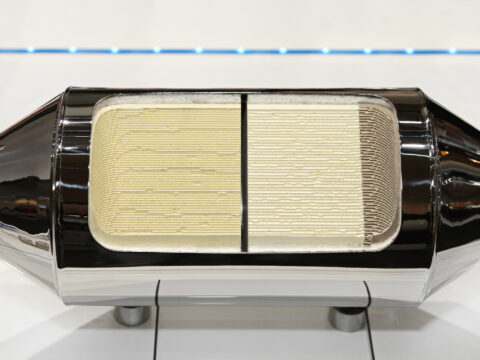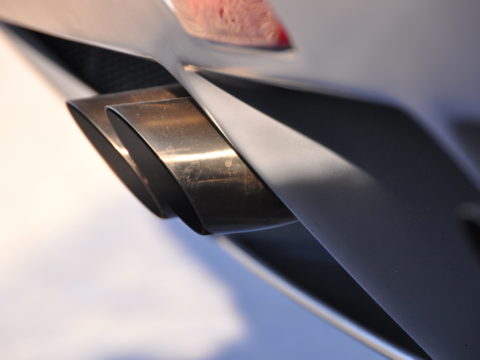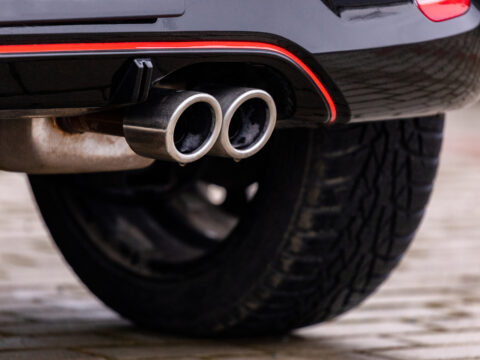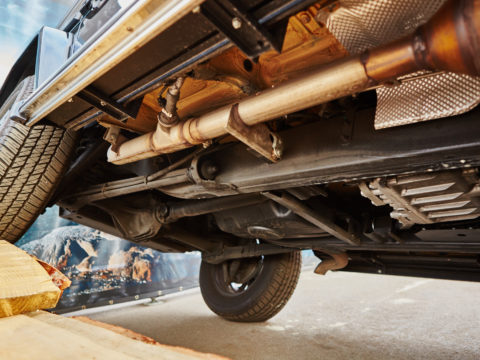Catalytic converters are an expensive part of your car that helps reuse fumes in your engine rather than releasing them into the atmosphere, damaging your environment.
This part focuses on limiting pollution in the air caused by vehicles.
This guide will walk you through how to simply clean your catalytic converter and why it is important to do so frequently.
Most manufacturers recommend replacing your converter when it has issues, but this is usually thousands of dollars. Manual cleaning can be a much cheaper option.
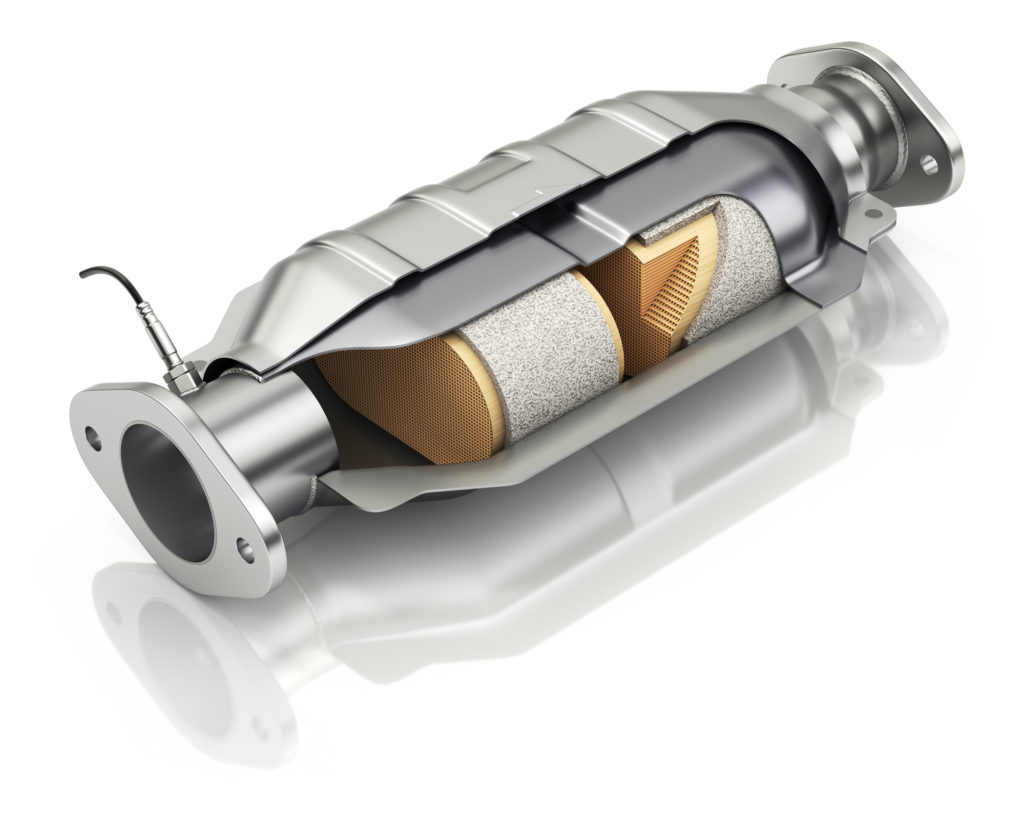
Contents
Quick Guide
- Remove the catalytic converter from the car.
- Place it in a bucket of lukewarm water mixed with dishwashing detergent.
- Leave it to soak overnight.
- Let air dry on a towel and reinstall the next day.
We will go more in-depth on the cleaning process, but this is a short guide to the steps to give you a general idea of the process.
When to Clean Catalytic Converter?
Catalytic converters filter out so many toxins from your exhaust fumes that they become dirty very quickly. It is best to clean your converter between three and five times per year to keep it in good shape.
If you begin to experience any of the symptoms listed below, you likely have a clogged or super dirty converter that needs cleaning.
It’s best not to let catalytic converter issues go very long, as it harms both your engine and the environment. And in some states, this is cause for a voided registration or a moving violation.
Why Should You Clean Your Catalytic Converter?
While manufacturers do not recommend cleaning your catalytic converter, it can save you thousands of dollars down the road and help your car run more efficiently and environmentally friendly.
Below are the top reasons to clean your converter, or at the very least, inspect it.
Reduce Harmful Emissions
The reason for catalytic converters is to reduce the harmful pollutants that cars put into the air. These pollutants are toxic for both the environment and humans.
A functioning and clean catalytic converter keep our atmosphere cleaner and everyone healthier.
Save Money
If you regularly clean your converter, you can prevent it from getting clogged and needing a replacement. Replacement catalytic converters can cost close to $4,000, including parts and labor depending on the vehicle model.
Learning to do it yourself will also save you hundreds, as the charge for a catalytic converter cleaning can be expensive.
Inspect for Damage
If your car makes strange noises, especially a loud revving, you may have a damaged catalytic converter. This situation is quite an expensive nightmare, so you may want to see it for yourself before bringing the car to a garage.
Using the removal method of converter cleaning, you can inspect the piece to see any damage. If you can’t find damage, this is a great chance to clean it.
Hopefully, it was just dirty or clogged and runs fine after a deep cleaning.
Balance Fuel-To-Air Mixture
The fuel-to-air mixture is the mass ratio of air to a solid, liquid, or gaseous fuel present in a combustion process. If the fuel ratio is too high for the amount of air, the gas can make its way to the converter, resulting in damage.
On the other hand, if the fuel-to-air mixture has too much air, then too many pollutants will collect in the converter at once, clogging it.
The clogging happens because the air carries too much carbon residue into the converter when some were meant to remain in the fuel and travel to the engine.
Silence Sensors
If your catalytic converter sensors are going off, alerting you to a problem with a part, you may decide to clean it. A problem with your catalytic converter is serious, and the sensors will likely not shut off until something changes.
Before taking it to a mechanic and paying hundreds or thousands of dollars, you can clean it manually and see if the sensors stop.
Symptoms of a Clogged Catalytic Converter
If you experience any of the following symptoms, you may have a clogged catalytic converter and will need to get it cleaned:
- P0420 Error Code
- Black exhaust smoke
- Very Hot Undercarriage
- Rotten egg smell
- Hard starts
- Muted acceleration
- Loss of power
- Poor fuel economy
What to Use to Clean a Catalytic Converter?
Many recommendations are floating around out there for what the ideal cleaning solution for a catalytic converter is, but there’s also some debate surrounding this.
Below are some of the most commonly used cleaning solutions for catalytic converters.
● Cataclean
Cataclean is probably the most popular cleaning solution for catalytic converters as it was designed specifically for this purpose.
Cataclean isn’t super pricey and gets the job done, leaving your converter clean and looking brand new.
● Dura Lube Severe Catalytic and Exhaust Treatment
People use the Dura Lube to clean their catalytic converters, however, the product is more a maintaining solution than a cleaner. But it will still work to reduce dirt and debris stuck in the catalytic converter.
Using this treatment regularly will reduce the build-up inside the converter so you won’t experience troubling symptoms or need to clean it as frequently.
● Klean-Strip Lacquer Thinner
Many people on Youtube and other corners of the internet highly recommend using lacquer thinner to clean your catalytic converter. This recommendation is because the thinner has harsh properties that remove sludge and poisons from the converter.
However, some people say this is too harsh for your converter and can wear it down.
● Dawn Dish Detergent
We’ve all seen the commercials with the dawn soap cleaning the baby ducks, so it must be gentle, right? Many car experts say you can use this gentle soap to loosen grime on your catalytic converter.
However, no manufacturers recommend doing this, but they may just be trying to boost catalytic converter cleaner sales.
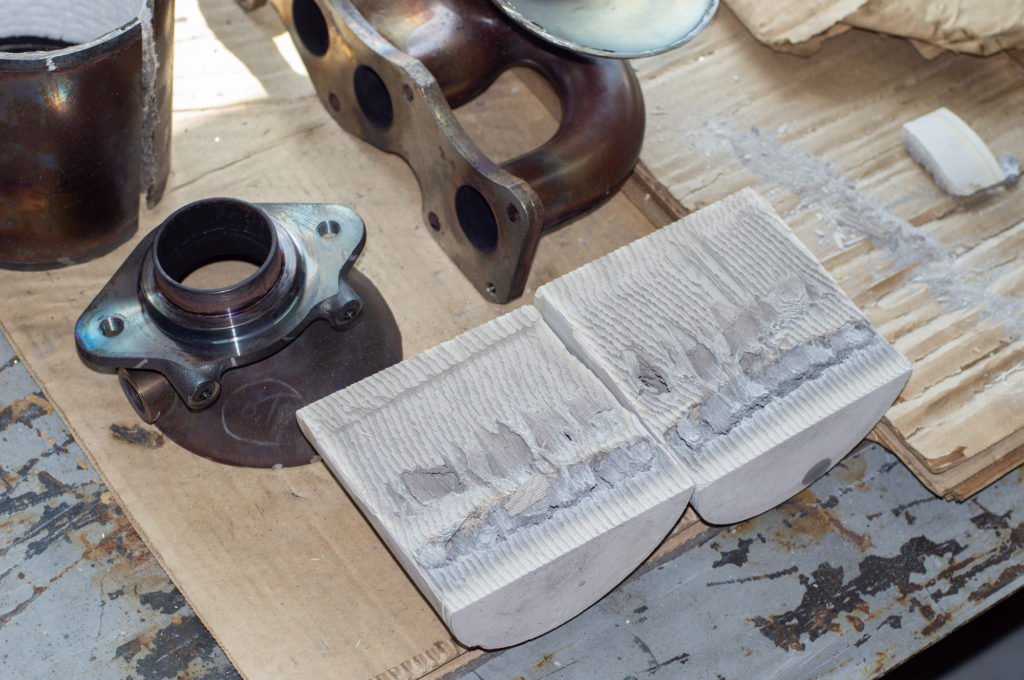
How to Clean Catalytic Converter Without Removing It?
Cleaning a catalytic converter without removing it is an easier and safer method. Removing a catalytic converter from a car isn’t necessarily dangerous for you, but there is a higher risk the converter will take damage and possibly need replacing.
Tools and Equipment Needed
To clean the converter without removing it, you need a catalytic cleaner. You cannot use anything else like dish soap or thinner, as this goes into your fuel tank.
Adding anything but fuel and catalytic converter cleaner could destroy your engine.
- Catalytic converter cleaner
- Fuel in tank
Step 1
Note the amount of fuel in your tank. The ideal amount is a quarter tank. Do not do this with a full fuel tank.
Step 2
Pour the recommended amount of cleaner into your fuel tank based on the amount of gas left in the tank.
Step 3
Take a drive around in the car to help the cleaner work through your exhaust system. Refer to the cleaner instructions for the amount of time you should drive around for.
How to Clean a Catalytic Converter Off the Car?
Removing the catalytic converter from your car before cleaning it is a more complicated process. But it can have a more thorough result, and you have the chance to examine the converter for damage.
Tools and Equipment Needed
- Floor jack
- Jack stand
- Wrench
- Oxygen sensor wrench
- Oil/degreaser
- Pressure washer (optional)
- Bucket
- Towel
- Cleaning solution
Step 1
Turn the car off and let it cool for a few hours.
Step 2
Jack the car up so you can get underneath.
Step 3
Remove the oxygen sensor with the oxygen sensor wrench.
Step 4
Use the oil to loosen the bolts around the converter.
Step 5
Remove the converter and inspect. Any damage or rattling noises means there is damage, and you need a replacement.
Step 6
Gently pressure wash the inside and outside of the converter if using a pressure wash. If you do not have a pressure washer, skip this step.
Step 7
Fill a bucket with hot water and chosen cleaning solution. Usually, four parts water and one part solution is a good ratio. Let soak for a few hours or overnight.
Step 8
Rinse in plain water; you can use the power washer for this if you have one.
Step 9
Let the unit air dry on a towel, and then replace it on your car.
Step 10
Reinstall the oxygen sensor and take the car for a drive to listen for strange noises or feelings.
Can You Clean Your Catalytic Converter Yourself?
Yes, you definitely can. The hardest part will be safely removing the catalytic converter, as you need to get under the car to do so. Once removed, the hard part is over. And as discussed, you can clean it using one of these two methods.
Who Cleans Catalytic Converters?
There isn’t any specific place where you can for sure get your catalytic converter cleaned. Most mechanics do not offer this service, and car washes simply can’t as it involves too many mechanics for their services.
Manufacturers recommend completely replacing a clogged converter, as cleaning it can potentially cause damage. But if you’re determined, you can likely find a mechanic willing to do it for you.
FAQs
Finally, here are some frequently asked questions you may find helpful as you work on cleaning your catalytic converter.
How much does it cost to clean a catalytic converter?
Mechanics that do perform this service can charge anywhere between $135 and $600 for a cleaning. There’s no way to know without getting an estimate from the shop.
How do you clean a catalytic converter to pass the smog test?
The cleaning methods discussed in this piece will clean a converter to pass a smog test. To increase your chances of passing, changing your oil can also help reduce exhaust fumes.
Can a clogged catalytic converter be cleaned?
Yes, but it is not a guarantee. The best way to clean a fully clogged converter is with the removal method, so you have access to the interior of the part.
If the unit is insanely clogged, even this may not work, but it is worth a try before you pay the thousands for a replacement.
Do catalytic converter cleaners actually work?
Yes and no. Catalytic converter cleaners are not magic. Seriously clogged converters or damaged ones will likely not be revived through a basic catalytic converter cleaner.
The removing and soaking method is better for a detrimental dirty converter, as opposed to just using the cleaner.
Can a catalytic converter unclog itself?
Wishful thinking, but no, this typically cannot happen. Maybe under very specific circumstances, a clog in the converter could loosen itself. But don’t bank on this, as it will most likely not happen.

